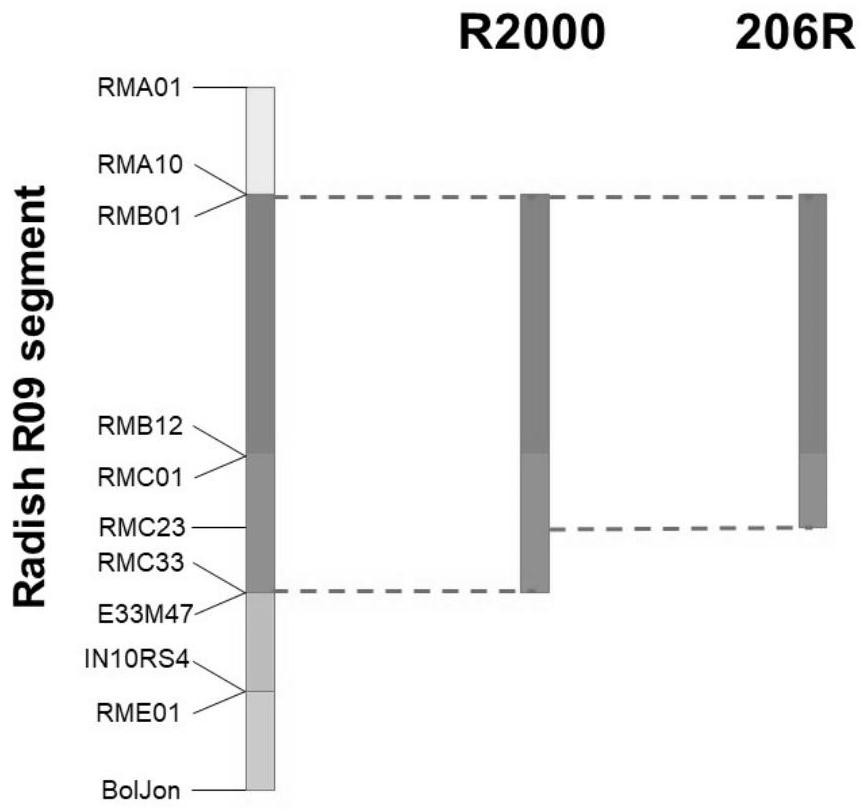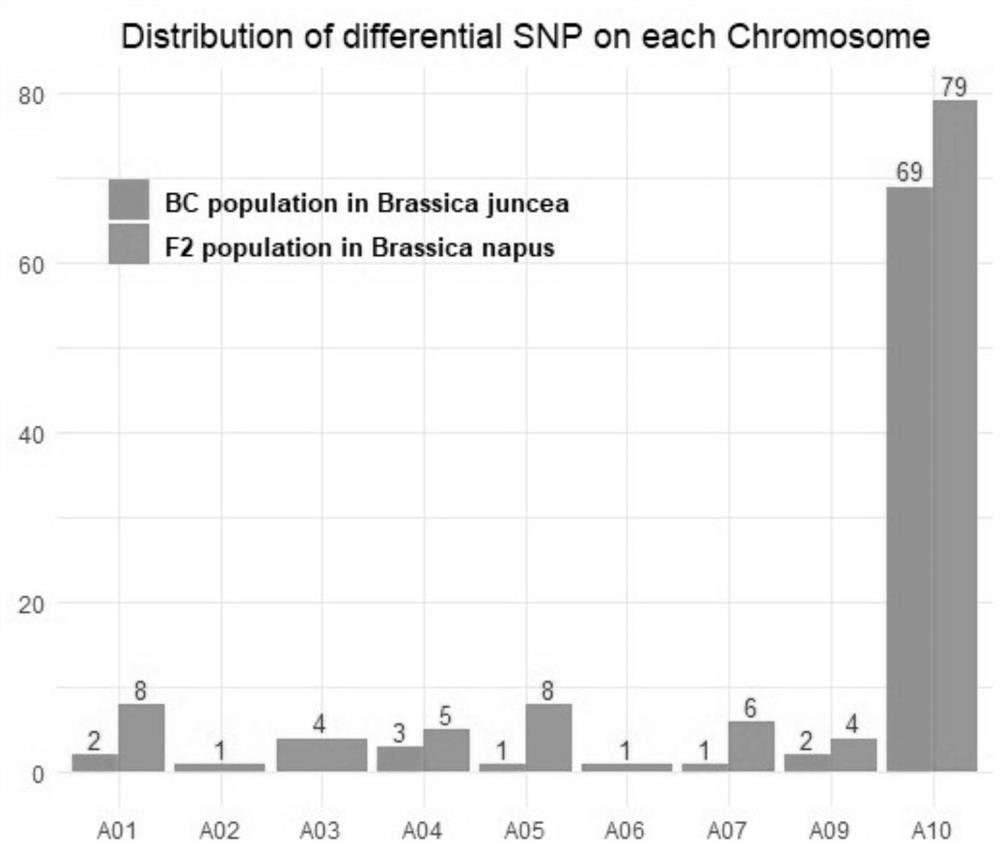Breeding method of brassica napus radish cytoplasm restorer line
A technology of Brassica napus and restorer lines, applied in the fields of botany equipment and methods, application, plant gene improvement, etc., can solve the problems of backward chromosome bridges, poor self-seed setting rate, etc., achieve short cycle, strong recovery ability, good affinity effect
- Summary
- Abstract
- Description
- Claims
- Application Information
AI Technical Summary
Problems solved by technology
Method used
Image
Examples
Embodiment 1
[0025]Example 1 Using distant hybridization combined with backcrossing to transfer the radish cytoplasmic restoration gene from Brassica napus into Brassica napus
[0026] (1) October 2013-May 2014: The radish cytoplasmic restorer line RLM198 (referred to as RLM198 in mustard type rapeseed) is a radish cytoplasmic restorer line improved by Indian scientist Professor Prakash, and has been published (Kirti et al. .,1995), using it as the female parent. Brassica napus Yu7-120 is derived from a recurrent improved population of Brassica napus, which has also been published (Zhao et al., 2016), and it is used as the male parent. The Brassica napus RLM198 and Brassica napus Yu7-120 are preserved in the Rapeseed Research Laboratory of Huazhong Agricultural University, and promise to release the biological materials to the public for experimental research within 20 years from the date of application. The male parent (Brassica napus Yu7-120) and the female parent (Brassica napus RLM198...
Embodiment 2
[0032] Example 2 Restoration of Gene Linkage Marker Validation
[0033] Brassica napus radish sterile cytoplasmic restorer line R2000 is an excellent restorer line improved by the French Academy of Agricultural Sciences through radiation mutagenesis. At the same time, a series of linked genetic markers (US008766040B2) were developed for scanning the radish restoration gene segment. The linkage markers of the restorer lines were divided into 5 groups, and the loci controlling the glucosinolate content were in the 4th group. Therefore, using this set of markers, the size of the radish segments among the restorer lines could be scanned and compared.
[0034] Compare the restorer line CLR650 created by Mr. Chen Weijiang of Hunan Academy of Agricultural Sciences, the restorer line R2000 created by French Academy of Agricultural Sciences, the restorer line 206R of Brassica napus and the restorer line BJO of mustard type rape created in the present invention, and Huayouza 62 ( HYZ62...
Embodiment 3
[0041] Example 3 constructs F 2 Population, Genetic Mapping of Restoration Genes Using Rapeseed 60K SNP Chip and Mixed Pool Resequencing
[0042] A F 2 For the fertility segregation population, appropriate amount of young leaves were taken from fertile and sterile individual plants, and DNA was extracted by the improved CTAB method. Precipitate DNA with 2.5 times of ice ethanol. After half an hour in the refrigerator, use a 100ul pipette tip to pick out the precipitated DNA into 1ml of 70% alcohol to ensure the purity of the DNA. After RNase digestion and quality inspection, the extracted DNA was handed over to Shanghai Passino Biotechnology Co., Ltd. for Illumina second-generation library construction, and sequenced on a Hiseq X-TEN sequencer. An F hybrid constructed from Brassica napus 206R and Brassica napus Zhongshuang11 2 The population adopts the same method of library construction and sequencing, and is sequenced on the Hiseq2500 sequencer.
[0043] to two F's 2 Th...
PUM
 Login to View More
Login to View More Abstract
Description
Claims
Application Information
 Login to View More
Login to View More - R&D
- Intellectual Property
- Life Sciences
- Materials
- Tech Scout
- Unparalleled Data Quality
- Higher Quality Content
- 60% Fewer Hallucinations
Browse by: Latest US Patents, China's latest patents, Technical Efficacy Thesaurus, Application Domain, Technology Topic, Popular Technical Reports.
© 2025 PatSnap. All rights reserved.Legal|Privacy policy|Modern Slavery Act Transparency Statement|Sitemap|About US| Contact US: help@patsnap.com



